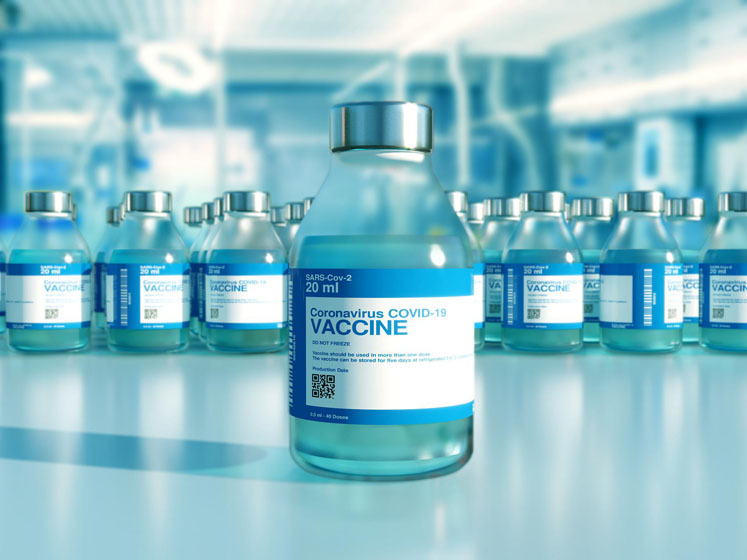For most of Europe, the pandemic has entered a new phase. With approximately 860 million vaccine doses administered across the EU, restrictions have eased. At the time of writing, 73% of the population has been fully immunised.1 This has broken the link between illness and fatality.2
Although it’s important that we learn to live with the disease, we must remember that things could change and COVID remains a challenge. In fact, the WHO warned in January that Omicron is not the end game.2 This is because, despite developed nations having implemented successful vaccination campaigns, infection rates continue to rise around the world — often among populations with low immunisation rates.
This means that the vaccine rollout and associated airlift is more important than ever if we’re to avoid a resurgence in the disease. Why? Because, currently, just 58% of the world is fully vaccinated, leaving plenty of scope for new variants.2
We’ve done the easy bit
An optimist might consider the fact that half of the world is vaccinated and think the hardest part is behind us. But, again, this isn’t the case. Most of the populations that have received two doses or more are in developed nations where transportation is better and populations are closer to pharmaceutical manufacturing sites.
For example, the UK and Sweden have 73 and 75% of their people vaccinated, respectively.2 The US sits at 66% at the time of writing.2 Meanwhile, the Democratic Republic of Congo (DRC) has just 0.56% of its nation fully protected. Yemen has just 1.33%. There are 18 countries that have less than 10% of their population double jabbed.2 While these figures are always changing, the trend will remain.

Put simply, governments have got the vaccine into the arms of those people who are easy to reach where temperature-controlled medications can be moved easily thanks to a developed airport infrastructure … or even by truck or train in some cases.
We can’t do this in the DRC. It has a population of 92 million, is sparsely populated and lacks a modern air transportation system. To rollout the vaccine there, it’s going to take a herculean effort. As Michel Sidibé, African Special Envoy for the African Medicines Agency, said recently: “The issue is no longer one of supply but rather one of unequal distribution.”3
Striving for equal distribution
There is no silver bullet to solve this challenge. But, progress is being made through COVAX and its delivery partners, such as UNICEF. In doing so, they face the challenge of maintaining a vaccine cold-chain. This is because vaccines need to be kept at a constant, safe temperature to maintain efficacy.4 This requires refrigerated units on the ground where the vaccines are used.
This challenge is now being met. In late 2021 ultra-cold chain freezers started being distributed across 21 African countries by the Hope Consortium.5 There are also solar-powered fridges capable of holding vaccines at the point of use. Initiatives such as these pave the way for progress … but there remains the challenge of transporting the vaccines to their destination.
This requires an airborne cold-chain that’s reliable and robust to avoid the loss of vaccines owing to temperature deviations. Often, manufacturers pack their products in a “passive” container before being loaded onto a plane. This is a giant cool box with insulation and cool packs, often using dry ice.
They’re bulky, inefficient, take up space that could otherwise be used for actual pharmaceuticals and, if there’s a delay, they will eventually lose their ability to maintain temperature. Given the next stage of the airlift is to locations without the benefit of a developed infrastructure, they present a risk.
The alternative is a temperature-controlled container. These, in contrast, are rechargeable and reusable units that move around the globe in a circular economy, a little like high-tech shipping containers. With an 11-hour charge, some can maintain internal temperatures for more than a week.

The main — and significant — benefit of a temperature-controlled container is that it provides flexibility, autonomy and control. These are all required for the next stage of the vaccine airlift. If plugged in, the containers can keep their cargo stable almost indefinitely. They also benefit from live monitoring of position, temperature, battery level, humidity, door openings and cargo inside. This allows shippers to continuously track their consignments to ensure they remain safe.
However, they do require ground crew to ensure safe handling, maintenance and onward transportation. Traditionally, this has been handled by permanent sites located at established airports. The set-up of a permanent station with full repair capacity and a stock of units is normally a 2–3-month process. This is neither suitable, nor quick enough. Pop-up stations are now available, which can be in place in a matter of weeks.6
With vaccines safely transported, delivered and stored in these hard-to-reach places, it’s down to the local healthcare system and aid agencies to ensure that they’re administered. Again, COVAX is working hard to ensure this is done. While western nations begin to relax and get back to normal, it must be remembered that the hardest part of the vaccine rollout is ahead of us.
It’s far from over if we’re to ensure long-term safety. Now is the time to consider how we can innovate and find solutions that meet the need to protect us all. Because the vaccine airlift will only get tougher.
References
- https://fortune.com/2022/01/20/pandemic-end-not-close-omicron-who/.
- https://ourworldindata.org/covid-vaccinations?country=OWID_WRL.
- www.brookings.edu/blog/africa-in-focus/2022/01/24/vaccine-inequity-ensuring-africa-is-not-left-out/.
- www.euro.who.int/en/health-topics/disease-prevention/vaccines-and-immunization/vaccines-and-immunization/vaccine-quality,-efficacy-and-safety/vaccine-cold-chain-management.
- www.unicef.org/supply/stories/delivering-covax-supplies-during-supply-chain-crisis-hope-consortium-steps-support-unicef.
- www.envirotainer.com/about-us/news/2021/securing-cold-chain-shipments-to-emerging-covid-19-hotspots/.
